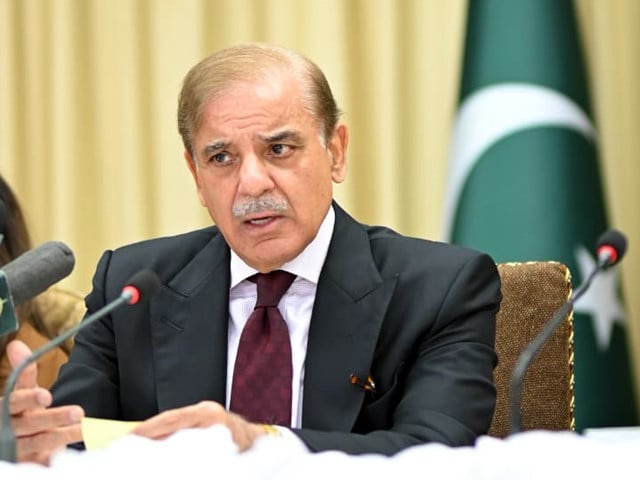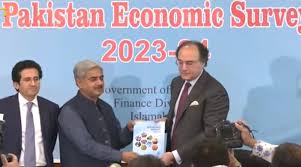Path to socialist modernisation M Haris
KARACHI:
While addressing a rising and uncertain economic outlook and challenges arising from increasing international geopolitical competition, China is set to complete the building of a high-standard socialist market economy by 2035. This aims to achieve socialist modernisation and modernise the system and capacity for governance.
The third plenary session of the 20th CPC Central Committee will be held in Beijing from July 15 to 18, as decided during a meeting of the Political Bureau of the Communist Party of China (CPC) Central Committee on June 27, where issues of further deepening reforms and promoting Chinese-style modernisation were studied.
China is now developing differences with the West, and the dynamism of the global economies is gradually vanishing. China has caught up with the latest, affordable, and quality technologies. After passing decades, China is going into its second transition, advancing to the advanced stage of socialism by 2035 from a lower stage of socialism. The CPC, with 100 million workers, sent two million workers to the countryside to eliminate poverty and resolve issues there. The party succeeded in lifting 850 million people out of poverty over the last 40 years, showcasing a success story of the CPC and crediting communism, not capitalism.
China has never adopted a strategy to restore capitalism. It deployed some elements of capitalism to industrialise the country. Once industrialised, the country would shift to the advanced stage of socialism, as it is currently in the lower stage of socialism. The lower stage of socialism is a mix of capitalism and socialism, called market socialism.
The CPC made all of these developments under a well-woven plan. The party initiated an industrial revolution, transforming basic habits of local people and imparting training in technologies, industry, farming, education, health, and more. After winning the political war, the CPC planned to win the economic front by setting up industries to compete with the West and strengthen socialism and communism.
In the past, China invited US and European companies to invest in sectors where it was weak. Once these multinational companies (MNCs) invested, the Chinese learned technologies and produced products through reverse engineering, as seen with QMobile phones replicating Apple phones.
Analyst and Lahore University of Management Sciences (LUMS) Associate Professor Dr Taimur Rehman noted that Americans once thought their investments in China would turn the Chinese into capitalists, but China remains rigidly communist. China has not undertaken massive privatisation; it brought in foreign capital and set up factories in special economic zones (SEZs), but state-owned enterprises (SOEs) like railways and telecommunications remain unprivatised. Unlike Russia, which suffered from wholesale privatisation, China maintained control over essential sectors.
China never established a free market but introduced a dual pricing system. The state controls the costs of essential commodities like wheat flour, rice, sugar, energy, health, and education, while luxury products produced by foreign capital are part of a free market. While the world faces inflation, China experiences deflation.
Senior Economic Analyst Dr Sabur Ghayur mentioned that China faces home-grown issues as many Chinese industries are not competitive or attractive. Rising labour costs are prompting industries to relocate. Pakistan could be a potential destination, but issues such as security concerns, high business costs, higher energy tariffs, bureaucratic hurdles, and repatriation challenges hinder this potential. Investors seek incentives and favourable conditions, and currently, China is moving to countries like Cambodia, Vietnam, and Bangladesh for factory relocation.
Several traits are abundantly clear: China’s ambitious national aspirations, a unifying drive to succeed, a hunger for individual and collective self-improvement, and a commitment to constant renewal. These traits have powered and sustained China’s economic rise, unprecedented in human history for its speed and scale. China is now known as the world’s factory, running large trade surpluses with almost every country.
For several decades, China was perceived as a place that replicates, not innovates, and produces at the lowest cost. While the low-cost aspect is true, the replication claim is not. China led with process innovation, fundamentally redesigning products, services, engineering, and delivery, down to the smallest details. These innovations continuously lower costs and improve outcomes.
Sameer Chishty, Chairman of AsiaPak Investments, said, “I’ve witnessed and participated in the astoundingly impressive economic and social transformation of China. First as a strategic advisor, then as an investor, I have worked with Chinese governments and entrepreneurs for 20 years, living in China for 12 of those. We saw this in industry after industry – in textiles, industrial equipment, steel, chemicals, trucks, power – just to name a few.”
Another myth is that Chinese companies receive unfair government protection and support, shielding them from competition. In reality, Chinese companies compete ferociously in the domestic market. From these hard-fought domestic battles emerge rigorously tested champions strong enough to serve the domestic market efficiently and then take on the world.
With wage growth and labour force skill upgrades, China is no longer the cheapest manufacturer. Chinese companies are now opening factories in cheaper markets like Vietnam, Thailand, India, Morocco, and Mexico, continually lowering costs while benefiting from China’s experience in process innovations and proximity to customers.
China also leads in fundamental research, resulting in world-leading product innovation. “We see this in media technology, electric vehicles, artificial generative intelligence, defence equipment, and renewable energy. You may not use TikTok, but your children definitely do and love it. Starting from nowhere, China has quickly emerged as the world’s biggest car exporter due to their expertise in electric vehicle design and delivery. All of us have seen the heroic exploits of the JF-17 joint strike fighter. And more of us are enjoying the dramatic price drops of solar panels,” he said.
Pakistan has benefited and can continue to benefit greatly from China’s experience. China’s peaceful rise and Pakistan’s long, close relationship with the US present Pakistanis a unique opportunity for mutual benefit, national prosperity, and regional peace. Locals in Pakistan can learn much from China’s ambition, discipline, and renewal. Pakistan has worked closely with China on China-Pakistan Economic Corridor (CPEC) projects in power, logistics, ports, and transport.
A forward-thinking example is joint development and transfer of technologies in Artificial Intelligence (AI), helping Pakistan stay at the forefront of this crucial technology.
Pakistanis can now work more closely with China at a private sector level. For example, relocating some light manufacturing to Pakistan, which would become export ventures for Pakistan. Another example is jointly mining and harvesting Pakistan’s natural mineral resources, executing value-added activities in Pakistan with a trained Pakistani workforce.
THE WRITER IS A STAFF CORRESPONDENT


1718484315-0/images-(3)1718484315-0.jpg)